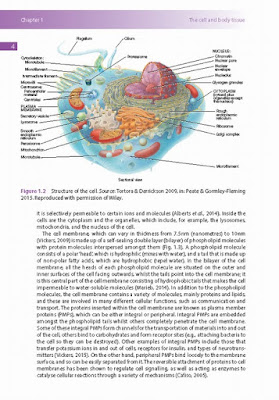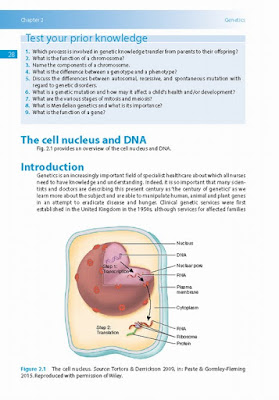by Elizabeth Gormley-Fleming (Editor), Ian Peate (Editor)
In order to provide safe and effective care to children and families, it is essential that those who are providing that care are able to understand the pathophysiology that underpins the child's condition.
The overall aim of this text is to help make the sometimes complex subject of pathophysiology accessible and exciting, and to enable the reader to apply their knowledge to various contexts of care. The body has an extraordinary ability to respond to disease in a variety of physiological and psychological ways. It is able to compensate for the changes that come about as a result of the disease process - the pathophysiological processes. The text can assist you in advancing your critical thinking; it fosters innovation and creativity in relation to the health and wellbeing of those to whom you have the privilege to offer care.
The text adopts a user-friendly approach - inviting you to delve deeper, discover new facts, and to engender curiosity. There are many illustrations, which are used in such a way as to explain and assist in understanding and appreciating the complex disease patterns that are being discussed. Applying a fundamental approach will provide you with a crucial understanding of applied pathophysiology, while emphasising that at all times the child and the family must be at the centre of all that is done.
A series of activities are provided, which are intended to help you learn in an engaged way and support you as you apply your learning in the various care settings, wherever these may be. This text offers an up-to-date overview of pathophysiology and the key issues associated with care provision.
The need to constantly consider the wider context of care provision, supplementing a nursing focus and recognising the broadening of the professional base, is emphasised. In providing care that is contemporary, safe and effective, an integrated, multidisciplinary approach is a key requirement. Healthcare students are important members of any multidisciplinary care team. It should also be acknowledged that contemporary care provision is delivered in ever-changing environments to a range of children, families, communities and circumstances.
Most chapters provide case studies that are related to chapter content. The chapters will stimulate reflection and further thought. In all case studies the names used are pseudonyms, in order to maintain confidentiality. Nurses owe a duty of confidentiality to all those who are receiving care (NMC, 2015). The majority of case studies have been extended further and include data concerning the patient's vital signs and blood analysis. This can help you to relate important concepts to care, offering you further insight into the patient's condition and therefore their needs. A selection of case studies include a Paediatric Early Warning Score (PEWS).
In England, nearly every hospital uses a different PEWS chart and calculates PEWS in varied ways. The PEWS charts included in this text are only there to demonstrate how they may be used. It must be remembered that infants (0-11 months), preschool children (1-4 years), school-age children (5-12 years), and teenagers (13-18 years) will all require a PEWS chart that is specific to their age. You should familiarise yourself with the PEWS chart used in the organisation where you work.
Where appropriate, significant information related to the chapter appears in boxed format to focus the reader, for example, red flags and medicines management. This can help you when you are offering care to children and families who may be vulnerable and scared.
A feature found in most chapters is the investigations box. One investigation has been chosen related to chapter content. This contains details about the test or investigation encouraging the reader to think about the pre-, peri- and post-procedural care that the child and family may require.
All chapters begin and end with questions, which are there to test your pre- and postknowledge. A range of learning resources are included at the end of the chapters, such as word searches, 'fill in the blanks', crosswords, and label the diagram activities. A list of further resources that you may wish to access with the intention of increasing and advancing your learning is provided at the end of each chapter. Each chapter also has a glossary of terms.
Pathophysiology is concerned with the cellular and organ changes that take place when disease is present, and the effects that these changes have on a person's ability to function. When something happens that interrupts the normal physiological functioning of the body, for example, disease, it becomes a pathophysiological issue. It must always be acknowledged that normal health is not and cannot be exactly the same in any two children, and thus when the term 'normal' is used, it must be treated with caution. An understanding of pathophysiology'normal'and 'abnormal'can assist the healthcare student in helping the child and family in a kind, sensitive, compassionate, caring, safe and holistic way.
This text is a foundation text providing support to the reader as you grow personally and professionally in relation to the provision of care. The text is primarily intended for nursing students who come into contact with children who may have a number of physically related healthcare problems, in the hospital and community setting. Illness and disease are discussed explicitly, highlighting the fact that children do become ill and they experience disease.
It is not imagined that you will read the text from cover to cover - we would encourage you to dip in and out of it. However, it may assist in your learning if you first read Chapter 1 (The cell and body tissue) and Chapter 2 (Genetics), as these provide a good starting point - they set the scene. The aim is to entice and encourage you, to whet your appetite, and inspire you to read further, and in so doing we hope to instill a sense of curiosity in you.
- Publisher : Wiley-Blackwell;
- Language : English
- Paperback : 416 pages
- ISBN-10 : 1119232651
- ISBN-13 : 978-1119232650
- Item Weight : 1.86 pounds
- Dimensions : 6.7 x 0.8 x 9.8 inches









No comments:
Post a Comment